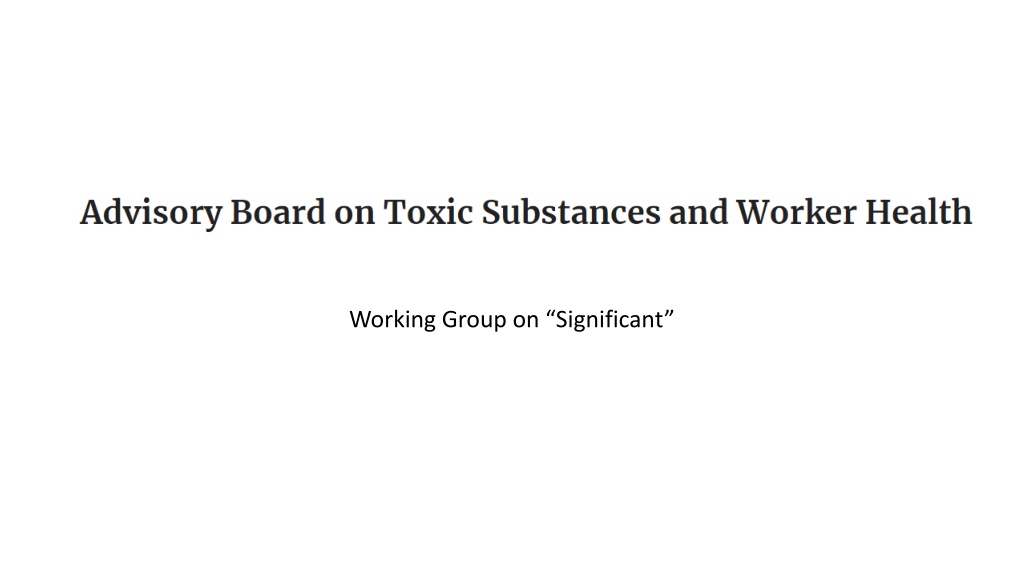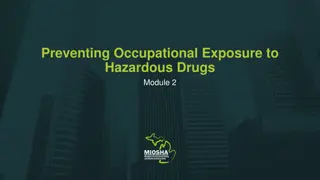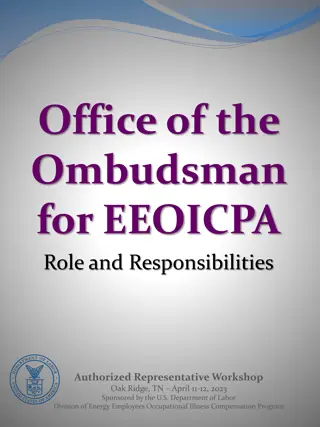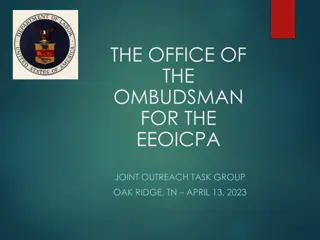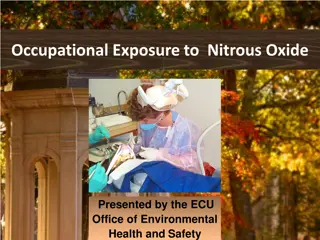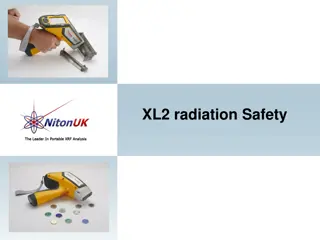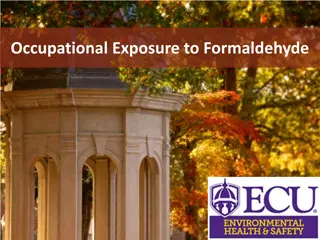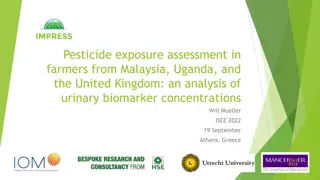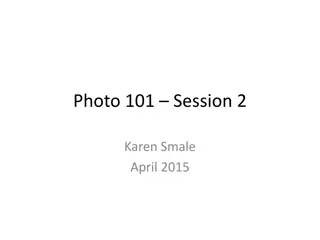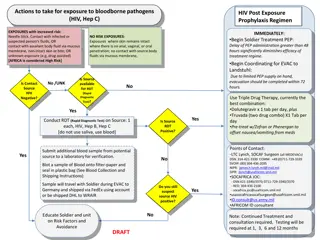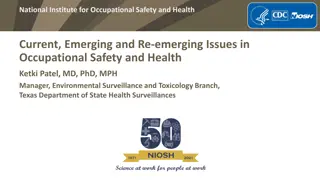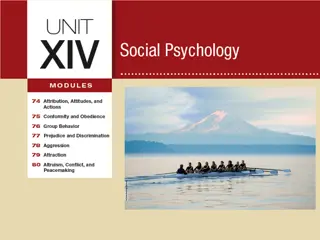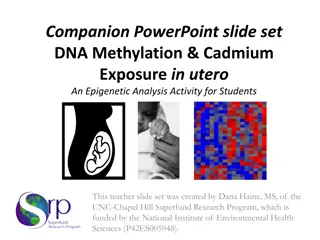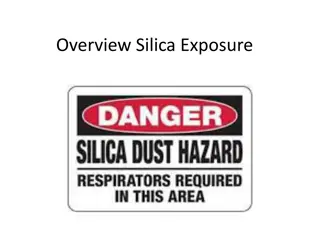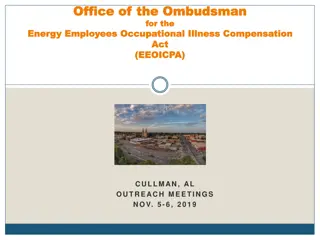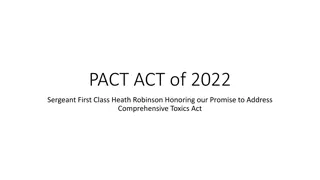Understanding the Significance of Exposure in EEOICPA Procedures
Delve into the complexities of exposure assessment in the context of EEOICPA procedures, examining the nuances of significant exposure levels and their impact on causation determination. Explore proposed recommendations for refining exposure assessment metrics to enhance causation evaluation.
Download Presentation

Please find below an Image/Link to download the presentation.
The content on the website is provided AS IS for your information and personal use only. It may not be sold, licensed, or shared on other websites without obtaining consent from the author. Download presentation by click this link. If you encounter any issues during the download, it is possible that the publisher has removed the file from their server.
E N D
Presentation Transcript
Significance as Specified in EEOICPA* *https://www.dol.gov/sites/dolgov/files/owcp/energy/regs/compliance /law/EEOICPAALL.pdf
Significant in Procedure Manual Significant appears 99 times in the DEEOIC Procedure manual (ver 7.1 accessed on 3/15/23) Two different technical contexts in manual Assessment of exposure Determination of causation Word has different meanings and use may be misinterpreted
Causation Exposure EEOICPA https://www.merriam-webster.com/dictionary/significant
Current Procedural Guidance Characterize the exposure as one of the following: 1) Significant High 2) Significant Moderate 3) Significant Low 4) Between Incidental and Significant 5) Incidental 6) No exposure
Complexity of Characterizing Exposure Type of exposure (direct, bystander, or area) Route of exposure (inhalation, ingestion, skin absorption) Intensity of exposure (concentration) Frequency of exposure Duration of exposure Calendar timing of exposure and disease onset (appropriate latency) Use of PPE, engineering controls or other mitigating factors These details may be important to causation determination and may be obscured when applying the current categories of exposure.
Proposed Recommendations IH exposure assessments refer to the basic metrics of exposure science, as these details can have distinct value in determining causation: 1. Intensity 2. Route 3. Frequency 4. Duration These metrics may further be divided by the facility and job under which they occurred for a claimant as relevant. DOL should define what is meant by the 6 different categories of exposure significance in the context of these four basic metrics of exposure. DOL should clarify how a single metric of exposure (e.g., significant low ) can be applied when a claimant has more than one medical condition for which different basic metrics have varying importance.
Proposed IH Exposure Assessment Form Proposed IH Exposure Assessment Form Medical condition(s) for which compensation is being considered should be identified by the diagnostic term used in the claim Claimed condition: Facility Dates Expos #1 Expos #2 Expos #3 Expos #4 Expos #5 Exposures #1, #2, etc. should be identified by name as listed in the SEM Job #1: Type of exposure* *Direct, bystander, or area Route of exposure** ** Inhalation, ingestion, skin absorption Intensity*** *** High, medium, low Frequency^ ^ Daily, 2 or 3 X/week, a few times a month, 1/month or less Duration (# years) ^^ Usually, occasionally, never Calendar years Include claim file page number(s) reference for data used in each colored cell, when applicable Use of PPE^^
Proposed IH Exposure Assessment Form Proposed IH Exposure Assessment Form - - Example Example Claimed condition = COPD Facility Dates Expos #1 Expos #2 Expos #3 Expos #4 Job #1: Pipefitter Hanford 1/1987 - 9/1997 Asbestos Cement Silicon dioxide, crystalline Welding fumes Type of exposure* Direct Direct Direct Direct and bystander Inhalation Route of exposure** Inhalation Inhalation Inhalation Intensity*** Low Medium Low (p 120) < Monthly (p 120) 10 1987-1997 Medium Frequency^ A few times/mo (p 180) 10 1987-1997 Daily (p 181) 10 1987-1997 2-3 X/week (p 180) 10 1987-1997 Duration (# years) Calendar years Use of PPE^^ Usually (p 180) Never (p 181) Occasionally (p 181) Occasionally (p 181)
